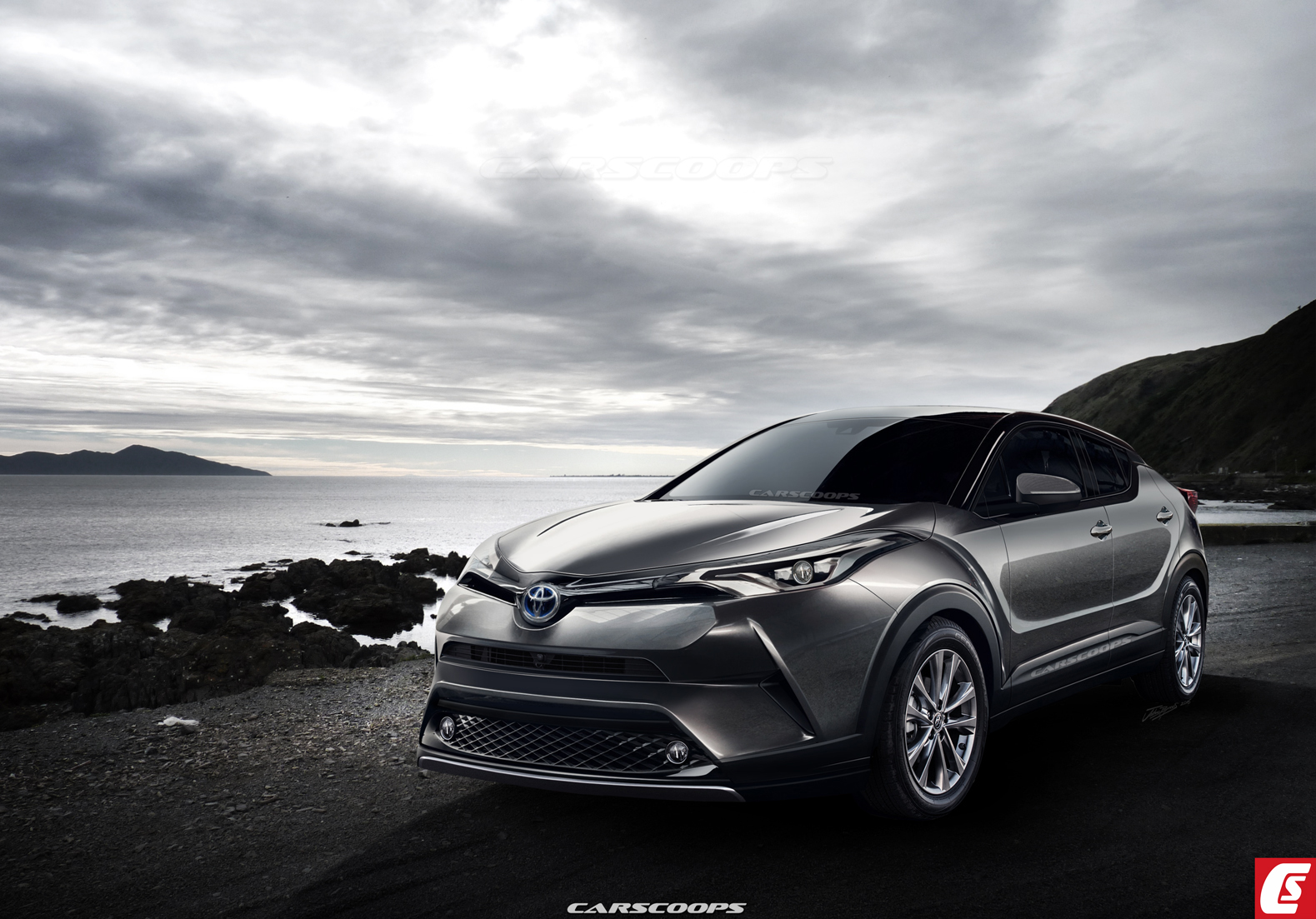Just before Toyota pulls back the covers on the all-new C-HR at the Geneva Motor Show, we try to decipher what the production subcompact crossover will look like.
Up until recently, when the words ‘Toyota and Styling’ were mentioned in the same sentence, my first reaction was to yawn, then promptly fall into a sleep-induced coma. Now before you come at me guns blazing – that was Toyota of yesteryear; today, the Japanese automaker looks like it is finally finding its design groove.
The dramatic-looking C-HR concept that first appeared at the 2014 Paris motor show is the next step for Toyota. It will be a global model that will also arrive in North America badged as a Toyota, after the Japanese carmaker decided to kill Scion.
Edgy Design:
From the radical new Prius to the low-slung GT86 and the futuristic Mirai, Toyota has dumped its beige image for one of more vibrancy and youthfulness. The C-HR could very well turn into the best interpretation of Toyota’s new and edgier design language to date.
Much of the C-HR concept should make it into production, including the angular and upright diamond-inspired front end, flared guards and floating roof, though we expect the door & C-pillar designs, which gave it a ‘pouncing’ stance, to be toned down.
Under The Skin:
Underpinning the C-HR is the versatile new Toyota New Global Architecture (TNGA), which promises to offer increased levels of chassis rigidity, comfort and handling, while also supporting future models of various sizes and powertrain layouts.
Expect cabin dimensions to straddle near Mazda’s CX3 and Chevrolet’s Trax, comfortably seating four – with perhaps five at a squeeze. Interior styling is still largely unknown; however, expect hints of the C-HR concept mixed with cues from the Corolla and RAV4.
Hybrid Credentials:
Toyota has developed new powertrains in tandem with the platform to improve performance and economy. In the case of the C-HR, it will get a new thermal-efficient hybrid powertrain, combining a normally aspirated, four cylinder gasoline unit with an electric motor, putting power to the ground via the front wheels. It’s not known yet if Toyota will offer a regular gasoline engine and all-wheel drive on the C-HR.
Compact CUV Rivals:
One of the fastest growing segments due to their smaller dimensions and practicality, the small crossover arena is also becoming one of the more stylish too. Nissan’s Juke kick started the trend with a punch to everyone’s eyes, however recent efforts like Mazda’s CX3, Chevy’s Trax/Buick’s Encore, and Jeep’s Renegade have lured buyers in their droves.
Do you think that the CH-R with its hybrid powertrain can shake up the segment? Share your thoughts on Toyota’s Juke rival in the discussion area below.
By Josh Byrnes
Photo Renderings Copyright Carscoops / Josh Byrnes




